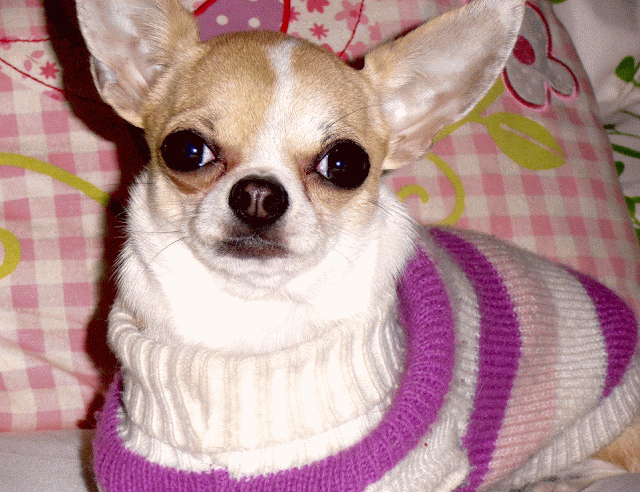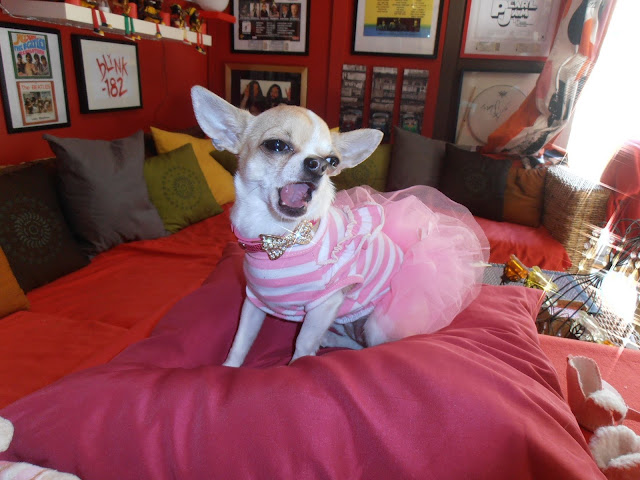Hello everyone Miss Mildred and myself Miss Squeak
have had a little break from blogging over the last few weeks as I have been having problems with my eye sight and not
being able to use my computer nor iPad it has been very hard not be able to blog as I really enjoy talking about things that are going on in the day to day life of Miss Mildred and myself so in the next few weeks I will be going in to have my back drained of the excess fluid that backs up behind my eyes and creates problems with my eyesight as the pressure from the fluid causes my optic nerves to swell, therefore causing the buildup of pressure and my eyes have a party with their own rave pulsing in my head and can't handle light or the sunlight so I have been in my cocoon as I call it not knowing when I will be able to blog again , After lots of painkillers I am sitting here typing and gee I am enjoying this as I love to talk about furbaby tips and tricks to help you all with your babies , So lets get started with some common Chihuahua health issues.
Some Common Issues
While Chihuahuas have fewer genetic defects than other breeds (maybe as a result of such a big amount of breeders attempting laborious to eliminate problems), no breed is perfect. The subsequent sections below will show you some idiosyncrasies — some serious however most not — that are typically seen in Chihuahuas and different Toy breeds.
Subluxation of the patella
In dog lingo, subluxation of the patella is named slipped stifles or loose kneecaps. once it happens, the kneecap (we're talking about the rear legs) slips out of its groove — sometimes often and generally seldom — depending on the severity of the matter. If your dog is one of the unfortunate few whose kneecaps slip often, surgery is also the answer. A dog with a light case will live a standard life, kind of like a person with a trick knee. Subluxation of the patella could be a relatively common drawback in tiny breeds and a few massive ones as well.
Hypoglycemia
Hypoglycemia suggests that low blood glucose and could be a common drawback in young Toy breed puppies, though most of them grow out of it before they're old enough to depart the breeder. But for some, it is a danger throughout their lives.
Symptoms of low blood glucose are a staggering gait, glassy eyes, and generally either softness or rigidity. If the dog does not receive immediate help, he will suffer seizures, unconsciousness, and eventually, death. Treatment involves putting some sugar in your dog's mouth, calling your Furbabys Doctor, and heading for the clinic. Once you recognize your dog has a tendency toward hypoglycaemia, you'll prevent more attacks by changing his feeding schedule to tiny amounts many times daily and avoiding sweetened treats (check the ingredients before getting the dog treats). An excessive amount of sugar in his food will place Pepe on a roller coaster ride of sugar highs and lows instead of keeping his blood glucose nice and level.
If you get your Chi accustomed taking delicious liquid from an eyedropper, administering liquid medication becomes a cinch. Sometimes melt a teaspoon of vanilla frozen dessert, place it in an eyedropper and give it to her just as if it had been medication.
Collapsing trachea
Collapsing trachea could be a drawback for Toy dogs of many breeds. The symptoms embody coughing, shortness of breath, and exhaustion. although it appears more typically in dogs older than five years, an occasional puppy has it from birth. To grasp the condition, think about the trachea as a straw manufactured from cartilage that carries air from the neck to the chest. once the cartilage collapses, breathing becomes troublesome, quite like sipping soda through a flattened straw.
Your vet will treat the condition with medication, however if you smoke, your Chi's prognosis is also poor. Secondhand smoke is a proven contributing issue to the problem . . . and smoke tends to settle low, wherever a little dog's nose is. My very little Miss Mildred has this condition and it's conjointly known as the reverse sneeze after I detected Miss Mildred create this noise for the first time i was so afraid and frighten i assumed she was going to die and she was only home a day of so once this happened.
Heart murmur
Heart murmurs are relatively uncommon in Chihuahuas and even those that have one usually have the functional kind. As in folks, which means they will be as active and athletic as they want and live long, traditional lives.
Molera
The Chihuahua's molera(a.k.a. fontanel) is considered a breed characteristic and not a defect. Most Chihuahuas (80 percent to 90 percent) have a molera — a soft spot on the top of their head kind of like a human baby's soft spot. However in contrast to babies, most Chihuahuas do not outgrow it. though it always shrinks because the dog matures and finally ends up between nickel- and dime-sized, your furbaby's molera will not be a problem as long as you are gentle once fondling or handling her head.
In rare cases, the molera remains quite massive and might be a symbol of a significant problem referred to as abnormality (see subsequent section). however don't borrow trouble. hydrocephalus has many alternative signs besides a larger-than-usual molera.
Hydrocephalus
A dog with hydrocephalus (a.k.a. water on the brain) could have a bizarrely massive head for his size caused by swelling. other signs of this fatal condition are frequent falling, seizures, lots of white showing within the eyes, an unsteady gait, and east-west eyes (the opposite of crossed eyes). A dog with hydrocephalus is in pain and will not live long, therefore euthanasia is the humane resolution. (Euthanasia is the medical term for a humane, vet-assisted death.)
Going under anesthesia
The possibility that your dog could someday need anesthesia is one main reason why you would like to choose a Furbaby Doctor who is accomplished in treating Toy dogs. although anesthesia-related deaths are rare, and typically the results of an allergic reaction, its use is potentially dangerous. Your vet uses anesthesia only if necessary (before surgery, for example).
Be sure you recognise the way to clean your furbaby's teeth properly in order that cleansing them under anesthesia is not necessary. once your dog has to go under anesthesia (during spaying or fixing, for example), ask your Furbaby Doctor if any necessary dental work (such as pulling impacted baby teeth) will be done at the same time.
Be sure your vet uses one of the modern gas anesthetics. they're much safer than the old fashioned intravenous product.
Watch those eyes
It's certainly not a condition, but because Chihuahuas have massive eyes and live near the ground, they're additional susceptible to eye injuries than a lot of alternative breeds. Place several drops of saline solution in your dog's eye if the injury appears minor. that's usually all it takes to flush out a remote object that was accidentally kicked up by someone's shoe. If that does not relieve the matter, or if the injury seems additional serious, take your Furbaby to the vet.
I really hope this blog has helped you with any of your concerns regarding your little furbaby chihuahua.
Miss Mildred has been sitting on my lap while I have been
typing this blog as I mentioned before I have been unwell with my inter cranial hypertension and she has been looking after her mumma very well I believe our furbabys know when we are unwell and they comfort us in the only way they know with love licks and kisses. Miss Mildred and my amazing Monster are the most wonderful caring loving sweet and affectionate people in my life I am so lucky to have them both in my life so until my next blog stay safe and remember to smile. If you have anything you might like me to write about don't hesitate to let me know in the comments below as I would love to have a challenge or project to research ,
Have a wonderful week !
Live Laugh Love
Miss Squeak and Miss Mildred xx
Thankyou very much for reading my blog
Miss Squeaks Common Chihuahua Health Issues
Please Remember too
Like +1 Comment and Share
Miss Squeak and Miss Mildred xx























